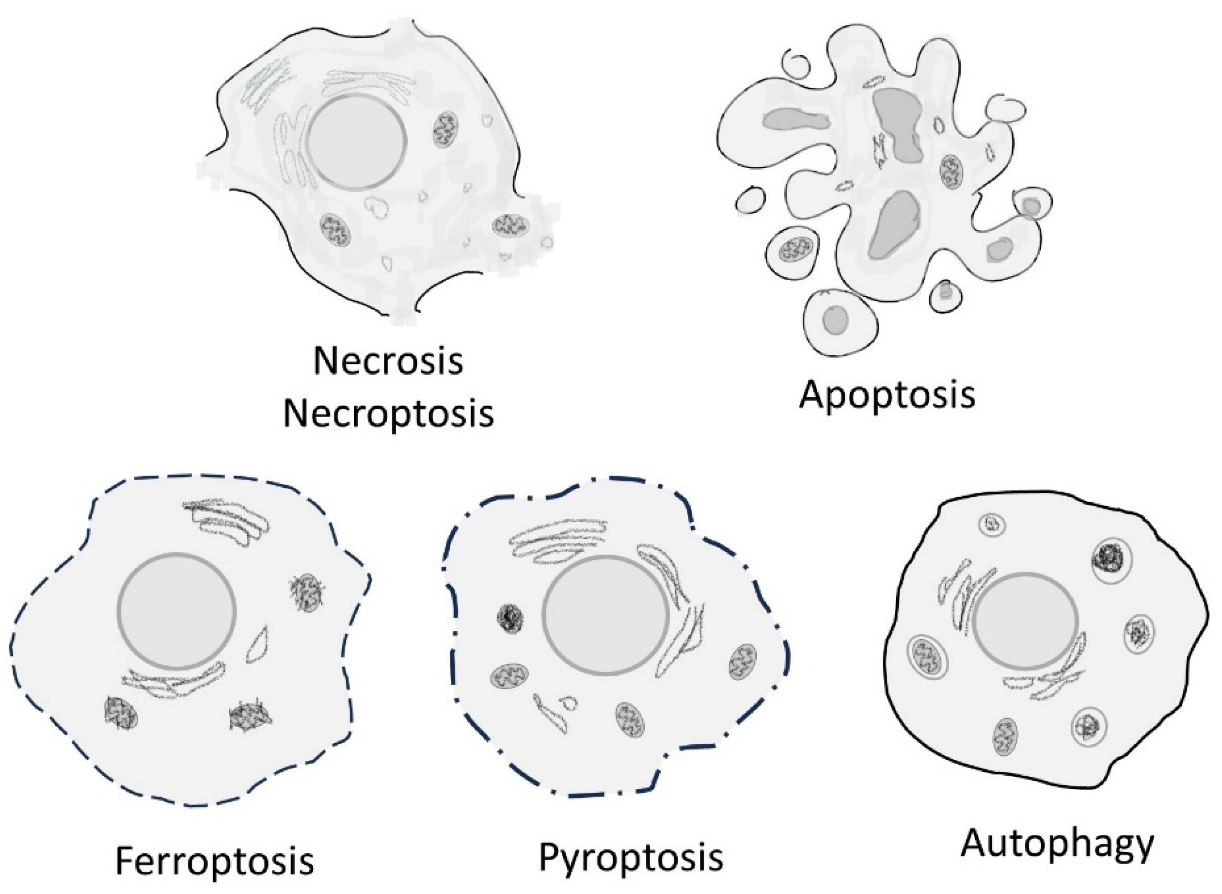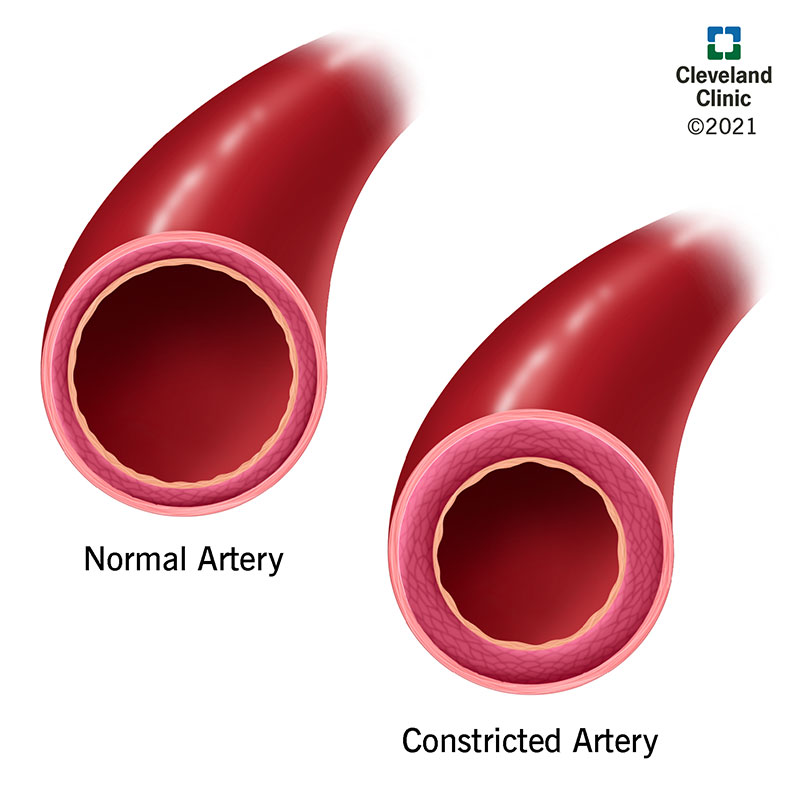A patient has a heart attack that leads to progressive cell injury that causes cell death with severe cell swelling and breakdown of organelles and release of cellular debris. What term would the nurse use to define this process?
Necrosis.
Apoptosis.
Adaptation.
Pathologic calcification.
The Correct Answer is A
Choice A Reason:
Necrosis is the term used to describe the death of cells or tissues through injury or disease, particularly when it involves severe cell swelling, breakdown of organelles, and release of cellular debris. This process is typically uncontrolled and results from factors such as lack of blood flow (ischemia), toxins, or trauma. In the context of a heart attack, necrosis occurs due to the lack of oxygen and nutrients, leading to cell death and tissue damage.
Choice B Reason:
Apoptosis is a form of programmed cell death that occurs in a controlled and regulated manner. It is a natural process that helps maintain homeostasis by eliminating damaged or unnecessary cells without causing inflammation. Unlike necrosis, apoptosis involves cell shrinkage, chromatin condensation, and DNA fragmentation, but it does not result in the release of cellular debris.
Choice C Reason:
Adaptation refers to the changes that cells undergo in response to stress or adverse conditions to survive and maintain function. These changes can include hypertrophy, hyperplasia, atrophy, and metaplasia. Adaptation is a reversible process and does not involve cell death or the breakdown of cellular components.
Choice D Reason:
Pathologic calcification is the abnormal deposition of calcium salts in tissues. It can occur in areas of necrosis (dystrophic calcification) or in normal tissues due to hypercalcemia (metastatic calcification). While pathologic calcification can be associated with cell injury and death, it is not the primary process described in the scenario of a heart attack leading to cell death with severe swelling and breakdown of organelles.

Nursing Test Bank
Naxlex Comprehensive Predictor Exams
Related Questions
Correct Answer is B
Explanation
Choice A Reason:
Increased neuromuscular excitability is not typically associated with respiratory acidosis. Instead, respiratory acidosis can lead to symptoms such as confusion, fatigue, and shortness of breath due to the buildup of carbon dioxide in the blood. Neuromuscular excitability is more commonly associated with conditions like hypocalcemia.
Choice B Reason:
This is the correct answer. Respiratory acidosis occurs when the lungs cannot remove enough carbon dioxide (CO2) from the body, leading to an accumulation of CO2 in the blood. This increase in CO2 results in the formation of carbonic acid, which lowers the pH of the blood. The elevated levels of carbonic acid are a hallmark of respiratory acidosis.
Choice C Reason:
Increased pH is not associated with respiratory acidosis. In fact, respiratory acidosis is characterized by a decrease in blood pH due to the accumulation of carbon dioxide and the subsequent increase in carbonic acid. Therefore, this choice is incorrect.
Choice D Reason:
Hypokalemia, or low potassium levels, is not typically associated with respiratory acidosis. Instead, respiratory acidosis can sometimes lead to hyperkalemia (high potassium levels) due to the shift of potassium out of cells in response to the acidotic state. Therefore, this choice is incorrect.

Correct Answer is D
Explanation
Choice A: Minimal Effect on Vessels
A reduction in blood pH, which indicates acidosis, does not have a minimal effect on blood vessels. Acidosis can significantly impact vascular tone and function. Therefore, this choice is incorrect as it underestimates the physiological changes that occur in response to a decrease in pH.
Choice B: No Effect on Vessels
Similarly, stating that a reduction in blood pH has no effect on vessels is inaccurate. Blood pH is tightly regulated, and deviations from the normal range (7.35-7.45) can lead to significant physiological responses. Acidosis can alter vascular tone, making this choice incorrect.
Choice C: Vasodilation
While vasodilation can occur in response to certain conditions, a reduction in blood pH typically leads to vasoconstriction rather than vasodilation. Vasodilation is more commonly associated with an increase in blood pH (alkalosis) or other factors such as increased levels of nitric oxide or prostaglandins.
Choice D: Vasoconstriction
When the pH of blood reduces, indicating acidosis, it often leads to vasoconstriction. This response is mediated by chemoreceptors that detect changes in pH and stimulate the vasomotor center to increase vascular tone. Vasoconstriction helps to maintain blood pressure and ensure adequate perfusion of vital organs during acidosis. Therefore, this is the correct answer.

Whether you are a student looking to ace your exams or a practicing nurse seeking to enhance your expertise , our nursing education contents will empower you with the confidence and competence to make a difference in the lives of patients and become a respected leader in the healthcare field.
Visit Naxlex, invest in your future and unlock endless possibilities with our unparalleled nursing education contents today
Report Wrong Answer on the Current Question
Do you disagree with the answer? If yes, what is your expected answer? Explain.
Kindly be descriptive with the issue you are facing.
